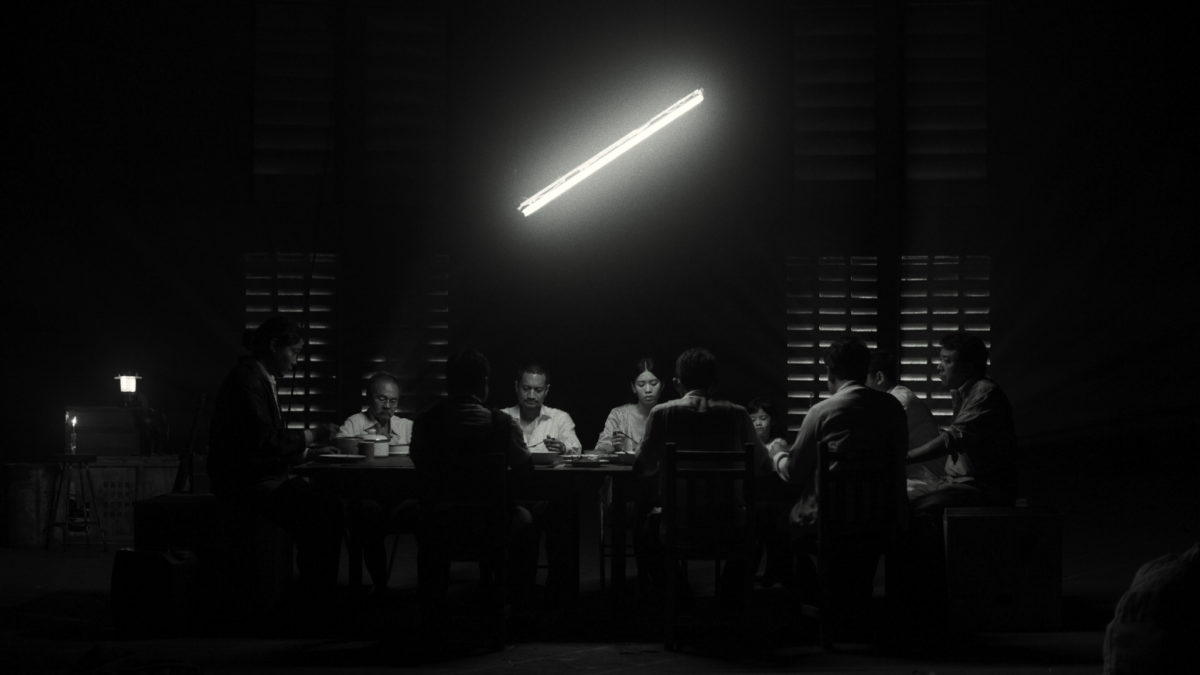There seems to be a blatant dissonance between the chaos of modern-day life and the streamlined, causally chronological manner in which history is often presented. Is there a point in arduously recreating canonical landmarks and flaunting historicity as virtue, when in doing so any sense of urgency is completely diluted? Is it counterintuitive to try and portray the impact and significance of any given moment by skirting around “factual history”? Even self-proclaimed personal accounts at times are constructed in such a way that they defer to the hierarchy of an assumed “bigger picture”; aiming towards being discursively relevant without actually engaging in the thick of it all.
It shouldn’t come as a surprise then that such self-defeating endeavors are bluntly rejected by more adventurous and committed filmmakers, and there’s something to be said about the diversity of approaches currently present in the 50th International Film Festival Rotterdam’s Tiger Competition. From abstracted vignettes of historical trauma traversing through a family’s bloodline, to jarring juxtapositions of the digital age leaking into archival footage, what these works all have in common is an impulse to try and render historical representation on their own terms; they all share different perspectives on the same understanding of how the erratic and contradictory nature of memory can push towards a more genuine cinematic depiction of how that which we call “the past” bleeds through every current moment.

Thai director Taiki Sakpisit’s The Edge of Daybreak, his first feature, is the one that undoubtedly takes the more oblique angle. This monochromatic psychological study borrows from horror film iconography and the more abrasive realms of slow cinema to impose its very deliberate sense of doom. The Edge of Daybreak turns out to be a fluorescent-lit nightmare lived through the different muted emotional outbreaks and violent episodes that a family is subjected to in two particular time periods. Anyone with a strong grasp of Thai history (or that has read the film’s extended synopsis) might know that the moments in question are the 1970s student uprisings and the 2006 military coup, but the film itself never actually addresses them directly. Narrative threads are sparse and constantly intertwined between timelines and irruptions of oneiric sequences, making the experience as a viewer mirror the discomfort and disorientation that permeates each and every moment the protagonists are on screen. DP Chananun Chotrungroj’s expressionistic, high-contrast photography and Akritchalerm Kalayanamitr’s suffocating sound design play off each other in an oppressive crescendo that holds together The Edge of Daybreak’s hypnotic atmosphere. Nevertheless, once the film has shown all its cards, the raw power of its historical scars ends up feeling somewhat tempered by its brash stylization.

Serbian director Marta Popivoda’s Landscapes of Resistance also deals with how refractions of the past haunt other timelines like specters, yet her concerns trade in The Edge of Daybreak’s corrosiveness for a more intimate environment. Built from collected correspondences with pioneering Serbian partisan and Holocaust survivor Sonja, this documentary doesn’t have an interest in visually depicting the horrors it’s addressing. Popivoda’s decision to abstain from using archival footage makes her central figure’s voice-over recollections the sole guiding force, re-contextualizing the mostly static landscape shots that make up the film’s visual dimension through her unassuming tone and vivid descriptions. DP Ivan Marković’s camera starts fixated on peeled-off wallpapers and claustrophobic shots of confined spaces, and eventually expands outdoors and incorporates creeping movements as Sonja’s narration drives us deeper and deeper into the intricacies of fascist repression. In a way, those grass-grown terrains and collapsing buildings are still imbued with echoes of the atrocities they witnessed, some of which feel almost palpable once our mind starts projecting what Sonja chronicles; the desolate landscapes beginning to emanate the emotional remnants of lives once lived.
Occasionally, journal entries and drawings from Sonja’s granddaughter and the film’s screenwriter, Ana Vujanović, are superimposed on the frame. These show a growing concern towards a contemporary rise of fascism in the Balkans, and at times seem to clunkily underscore what’s an already apparent link with contemporary society, yet one could argue that Landscapes of Resistance’s transparent stance as a militant work aims for mobilization, not subtlety. Again in contrast with The Edge of Daybreak, Popivoda’s urgency bursts throughout, even if imperfectly. Scattered ideas might be left floating around at times, and some visual cues don’t quite stick as well as others, yet still, there’s enough fervor in the core sentiment to make it all feel part of the same mission statement. After all, maybe it’s in the flawed and unfocussed essence of memory where we can really grasp the weight of history.
